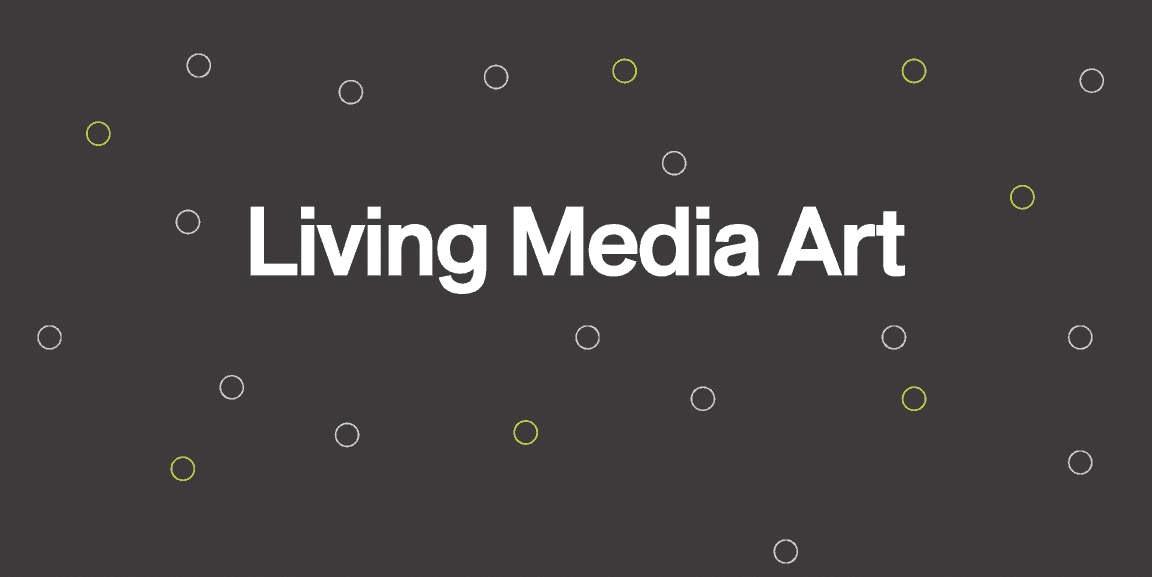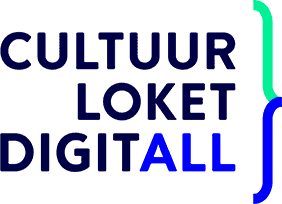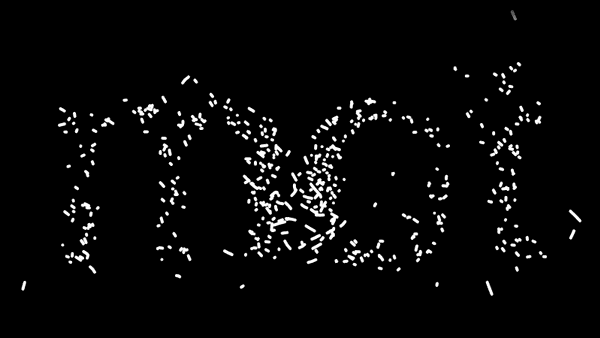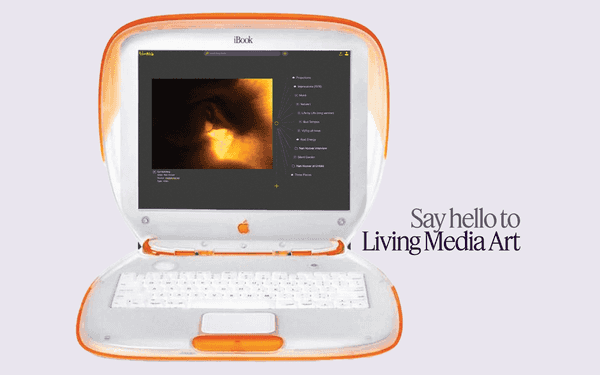
Future Prospects: LI-MA’s Living Media Art Platform
Redefining how digital and media art is preserved, shared and understood – online and offline
Living Media Art is both an ambitious and progressive move by LI-MA to secure the prospects of today’s digital and media art in the future. As well as being LI-MA’s tagline and guiding vision, Living Media Art is now also the name of a new community platform, designed to bring together the digital arts community in a shared effort to explore the future prospects of digital art. Read the article by Esther van Rosmalen.
What is Living Media Art?
Living Media Art is set up as a hybrid platform for knowledge-sharing about digital and media art. It is intended not only to act as an online platform but also meant for personal encounters onsite, situated at LI-MA’s base LAB111 located in Amsterdam. The idea to make its activities regarding preservation and research more visible arose in 2021 during COVID, when art institutions worldwide were looking for meaningful digital alternatives. For LI-MA developing a distinctive response came naturally, due to its extensive experience with digital technologies and online practices.
With support from Cultuurloket DigitALL, the development of the platform began in 2024. Studio mot was brought on to shape the digital component, while RNDR was tasked with adapting LI-MA’s physical space into an environment for exchange of knowledge about every aspect of digital and media art.
Involving the community is the heart of the project and therefore LI-MA invited them also to contribute actively to its development. Through a number of feedback sessions, wishes were expressed about access to the huge collection of digital works LI-MA manages, a more open structure for sharing inspiration, and a centralised base for knowledge – combined with opportunities to meet in person at LI-MA. Lowering barriers to participation aligns closely with the vision of LI-MA’s director Gaby Wijers: “We’ve always functioned as a network-driven organisation and therefore also used to reason from such a network, involving it and honouring impulses from the network.”
This led to a forum-like set-up where users can pose questions, but also contribute to, for example, case studies LI-MA is working on, or present a showcase of their own.
LI-MA’s Role in the Field
As a reminder, LI-MA's history traces back to the Nederlands Instituut voor mediakunst, Montevideo in short NIMk. In 2012, when the Ministerie van Onderwijs, Cultuur en Wetenschap (Ministry of Education, Culture and Science), under the reign of Halbe Zijlstra, stopped funding NIMk, Wijers took the initiative to continue its mission under the name LI-MA.
After more than a decade and improvements on professionalisation, LI-MA is one of the leading parties in the field of preservation and distribution of digital and media art worldwide. And to maintain this high standard requires not only knowledge and experience, but also an anti-institutional approach and a fine-grained structure of activities that is sometimes hard to fathom from the outside, but functions – albeit not always perfectly – like a well-maintained machine on the inside.
Preserving and distributing digital art inevitably involves balancing past, present and future. LI-MA has developed specific methods such as the case studies, where not only the artist's intentions and methods are investigated through interviews, but also the technical documentation, exhibition history and audience reception are brought together to create a more complete picture. It simply takes a lot of context to be able to look beyond technique alone such as insight about the zeitgeist.
At times, an artwork cannot be recovered. When that happens, it triggers a series of decisions involving the artist, the owner, and technical specialists. These processes are not isolated. LI-MA shares its findings with several major institutions such as Tate Modern and Centre Pompidou, among others, to build a ‘network of knowledge’. The annual symposium organised by LI-MA is a good example of a public outcome.
But they also push the boundaries of the conservation task in numerous other ways by making this specific art form more visible through lemmas on Wikimedia, organising screenings and setting up various websites such as the Digital Canon and mediakunst.net. In theory, one might assume that an organisation so embedded in digital transformation would be well positioned to benefit from it. In practice, however, the situation of LI-MA is precarious.
Uncertain Prospects
The benefits of digital transformation for the field of the arts are often extolled in the strongest of terms. According to the Raad voor Cultuur (Dutch Council of Culture), it could offer the art field a range of opportunities such as an improved digital infrastructure, targeted investments, more cooperation and exploiting the good starting position of the Dutch sector. It’s a vision strikingly aligned with the founding principles of the former mentioned NIMk: presentation, research and collection, combined with facilities and services tailored to artists and institutions alike. LI-MA has carried this legacy upwards to the best of its ability.
Yet despite a favourable review, its recent application for long-term structural funding in the area of digital culture was unsuccessful. When asked why LI-MA is not more clearly recognised as a vital link in the chain, Gaby Wijers answer is that this is partly due to the abolition of the sector institutes. “We specialise in digital art. But the ministry’s current stance is that museums receive funding to manage and preserve their own collections. They are expected to cover the costs. That sounds reasonable – until you consider how that principle is applied differently amongst other sectors.”
Preservation is, by its nature, a highly specialised and therefore costly activity. Resources are often insufficient, and priorities must constantly be reassessed, apart from the fact that digital art is only a small part of the collection of museums. Yet its need for care is immediate and complex however: “It is also very human that it is very difficult to estimate whether it will have that value in the future”, clarifies Vevi van der Vliet, LI-MA's business director.
Policy and Practice
Why does such a gap persist between cultural policy and the field of art? This urgent question that occurs knows several answers. Apart from the tribal struggle “is it art or is it about creative makers”, which Gaby characterises within digital culture, Vevi points to a fundamental difference of opinion about what is important: “The emphasis lies on production – on making new work. But what happens with that afterwards, or whether it can also be seen on a regular basis, how you preserve that is often left unaddressed.”
This, however, is precisely where LI-MA invests. Over the years, the organisation has placed increasing focus on knowledge transmission – not only out of principle, but also because it is a necessity. Much of the expertise around media art preservation, distribution and equipment is held by individuals, and in order to pass on to new generations, people have been trained to bridge that gap. Yet financial uncertainty has made it difficult to retain them.
Another consequence is the temporary suspension of public presentations that are meant to activate the huge collection of works they manage. Though not a presenting institution in the conventional sense, LI-MA has long operated with the conviction that works should be made accessible to audiences. The exhibition REBOOT. Pioneering Digital Art in 2023–2024 is a recent example, in which both the Dutch canon of digital art and its own role in the chain were highlighted in a collaboration with the Nieuwe Instituut.
The danger of a metaphor such as a ‘chain’ or ‘ecosystem’ is that its interpretation is neither verifiable nor measurable. While the development of the arts field runs parallel to policy, the very organisations that work closely with artists – such as LI-MA – manage to anticipate what later becomes institutional concern often reflected in the policy of funding programs. Recognition, however, tends to arrive too little too late. And yet, there are reasons to remain hopeful.
Design: Florian van Zandwijk, studio mot
Future Perspectives for Digital Art
Since the pandemic, digital art has found its way more regularly into institutional collections. Should LI-MA disappear, even in the short term, will pose a major problem for museums because just a few possess in-house adequate knowledge of the digital works they own. Therefore, Van der Vliet adds: "So suddenly it has value for them. Together we knock on the doors of the ministry with the message that our digital heritage is worth investing in."
By following up a number of difficult decisions, LI-MA has for the time being secured its immediate future. And in September 2025 the online part of Living Media Art will be launched, with some modifications, as the sphere where anyone with an interest in digital or media art is welcome.
At its heart, Living Media Art is about opening up the process of conservation. But its relevance may extend further still. The model LI-MA has developed may well prove applicable to other contemporary art forms, particularly those that question notions of authorship, materiality, or the object itself – like performance, for example, or work involving AI or 3D printing. What is required to understand today’s art in the future is a shared responsibility and a collective task that lies beyond the range and possibilities of major institutions. It is precisely the surrounding community that strengthens organisations in the field to extract the meaningful efforts.
A Platform for Exchange
Living Media Art therefore promises to be more than just a place for like-minded individuals to gather. It’s also an online environment that anticipates future challenges as Joost Dofferhoff, registrar at LI-MA, points out: “The problem with today’s ambitious new works – and with artists working with the latest technology – is how quickly they become obsolete. It’s aging so fast that we need different methods to keep pace.” The strength of Living Media Art lies in cultivating a wider, more engaged community: a space for sharing diverse forms of knowledge and critical inquiry. In doing so, it becomes a think tank, addressing issues even before they are formally recognised as problems. Or in other words, Living Media provides both space and opportunities to build a ‘network of knowledge’ even outside institutional constraints.
Though there remains hope that the digital platform will, in time, be matched by a physical, interdisciplinary counterpart and thus be able to further differentiate itself with other initiatives, Gaby also sees Living Media Art as a basis for new collaborations and, above all, “that it very much becomes the resource that is consulted and used by a lot of people in a lot of different ways.”
Written by Esther van Rosmalen (Witte Rook), June 2025
Design: Florian van Zandwijk, studio mot









